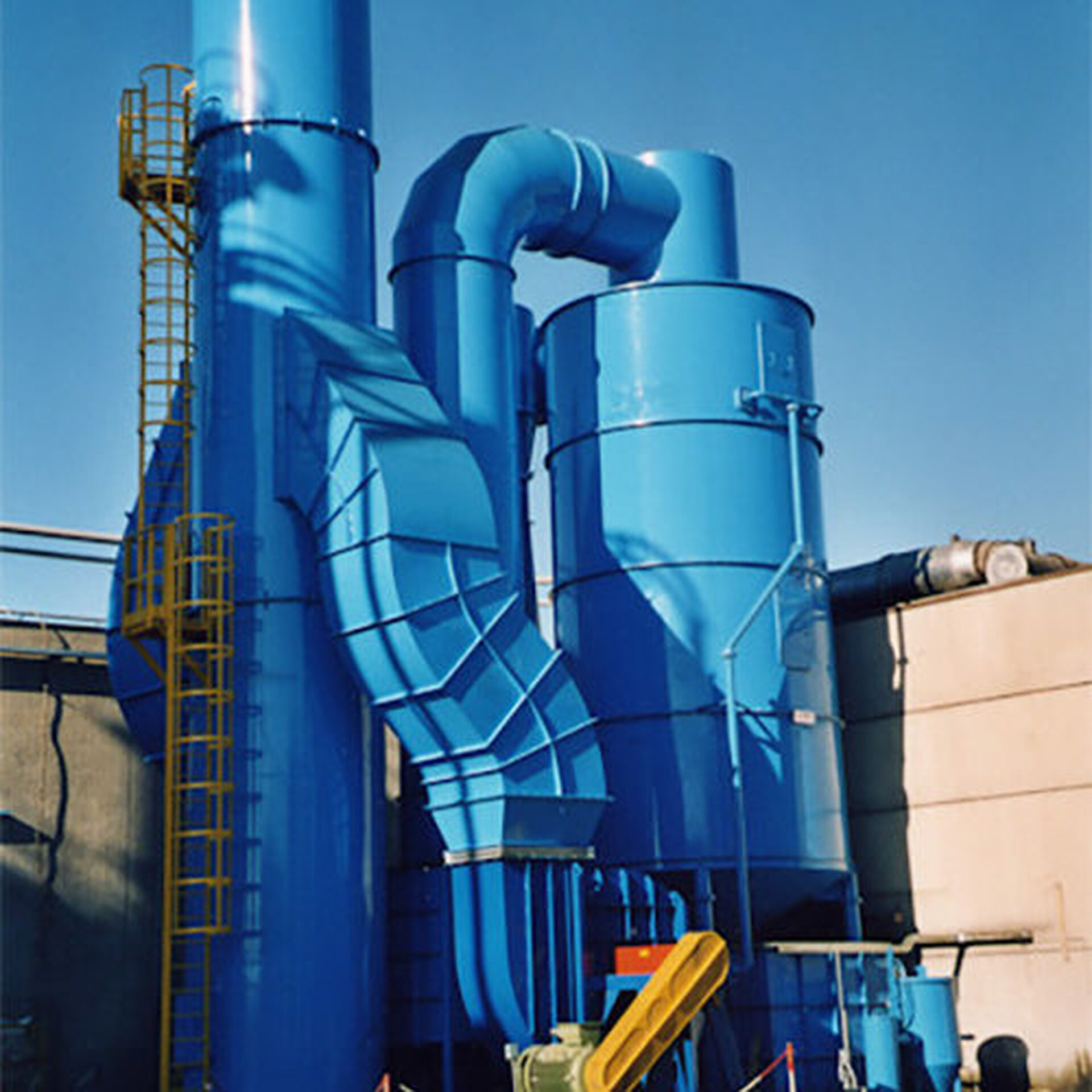Ozone and Wet Scrubbers

The purpose of a wet scrubber is to remove pollutants from the air and dissolve them into water for discharge in a waste water stream.
In a wet scrubber, water is sprayed or misted into the air stream to mix with the polluted air. The soluble pollutants in the air will dissolve into the water and be discharged safely in a wastewater stream where they can safely be removed or converted to safe compounds.
Water used in a wet scrubber may be mixed with Hydrogen Peroxide, Chlorine Dioxide or a variety of other chemicals to both improve pollution removal efficiency and to maintain a clean, efficient wet scrubber. These chemicals may bond to pollutants or convert the pollutant to a safe alternative using chemical reactions.
Ozone can also be used in the wet scrubber to improve wet scrubber efficiency and reduce chemical costs. Ozone can be used in any wet scrubber where the process of oxidation offers synergistic effects with water. Ozone may directly oxidize pollutants in the dirty gas stream, oxidize contamination on the scrubber walls or help increase the efficiency of water to trap pollution. While the use of ozone in wet scrubbers is fairly new, the rising costs of chemicals ensures ozone use in wet scrubbers has a very bright future.
Ozone reduces costs and increases efficiency:
As chemical costs rise, the costs to operate a wet scrubber go up. On going chemical costs can add up to very large operational costs. The use of ozone may reduce or completely eliminate chemical usage drastically reducing the operational costs of a wet scrubber.
Many chemicals used in a wet scrubber remain in the wastewater flowing from the wet scrubber basin. These chemicals may be undesirable or costly to discharge. Ozone will maintain a clean, efficient wet scrubber and revert back to oxygen in the wastewater stream.

Many wet scrubbers were designed to remove odor, however over time, the desire for improved odor reduction due to population growth has created an increase in odor complaints. Ozone use in wet scrubbers is a method to reduce a wide variety of odor emissions.
The Ozone Solutions:
Ozone can be dissolved into the make-up water flowing into the wet scrubber. This water should be plumbed directly into or close to the re-circulation water flow in the wet scrubber. This will allow the ozone to be sprayed into the wet scrubber contact area quickly. Make-up water flowing to the wet scrubber can be plumbed through an ozone injection system for simple installation.
If chemical usage is still necessary, chemicals can be delivered directly into the basin of the wet scrubber to ensure ozone does not negatively react with the chemicals.
Ozone use in odor control wet scrubbers:
Odor control wet scrubbers are commonly used for H2S removal and other odorous compounds from rendering plants, fertilizer manufacturers or other odor causing processes. Ozone is commonly used as a method to remove odor in other applications.
Ozone is an excellent, environmentally friendly method to remove odor in a wet scrubber. Ozone is fast reacting, but is not persistent in the water and dissipates quickly. Also there is no chemical inventory or storage of chemicals associated with ozone treatment. Odor control wet scrubbers commonly have bio fouling and slime forming inside the scrubber tower. Ozone slows this growth and removes this biological growth, increasing the efficiency of the wet scrubber.

Ozone Use in VOC Wet Scrubber:
VOC wet scrubbers are used to remove Volatile Organic Compounds (VOC's) or convert VOC's to CO2. Sometimes VOC scrubbers are referred to as CO2 scrubbers. A common use of VOC scrubbers is ethanol plants. Ozone is very effective at converting VOC's into CO2 by bonding with the carbon atom in the complex VOC molecules.
When ozone is used within a wet scrubber, ozone and water are used together with great efficiency to oxidize VOC's and other hazardous gases.
Ozone Advantages:
- Lower operating costs due to lower chemical usage
- Improved efficiency of wet scrubber by increasing oxidation
- Lower maintenance due to lower scaling and biological growth
- No chemical storage or transportation
- Ozone offers a safe alternative to chemicals
- Lower waste water discharge costs
The Use of Ozone in a Wet Scrubber:
Ozone gas is generated on-site by an ozone generator. Compressed air is supplied to an oxygen concentrator that will provide concentrated oxygen for ozone generation. This oxygen will be passed through an ozone generator cell to convert this oxygen (O2) into ozone (O3). This ozone gas will then be dissolved into water using an ozone injection system.
Typically, all make-up water will flow through the ozone injection system into the wet scrubber. The goal is to achieve a very high dissolved ozone level to inject into the water flowing to the wet scrubber.
All excess ozone that is off-gassed in the ozone injection process can be plumbed to the wet scrubber sump and be bubbled into the sump using a bubble diffuser. This ozone gas can help treat the sump water while off-gassing into the air stream to directly react with the polluted gas flow.
